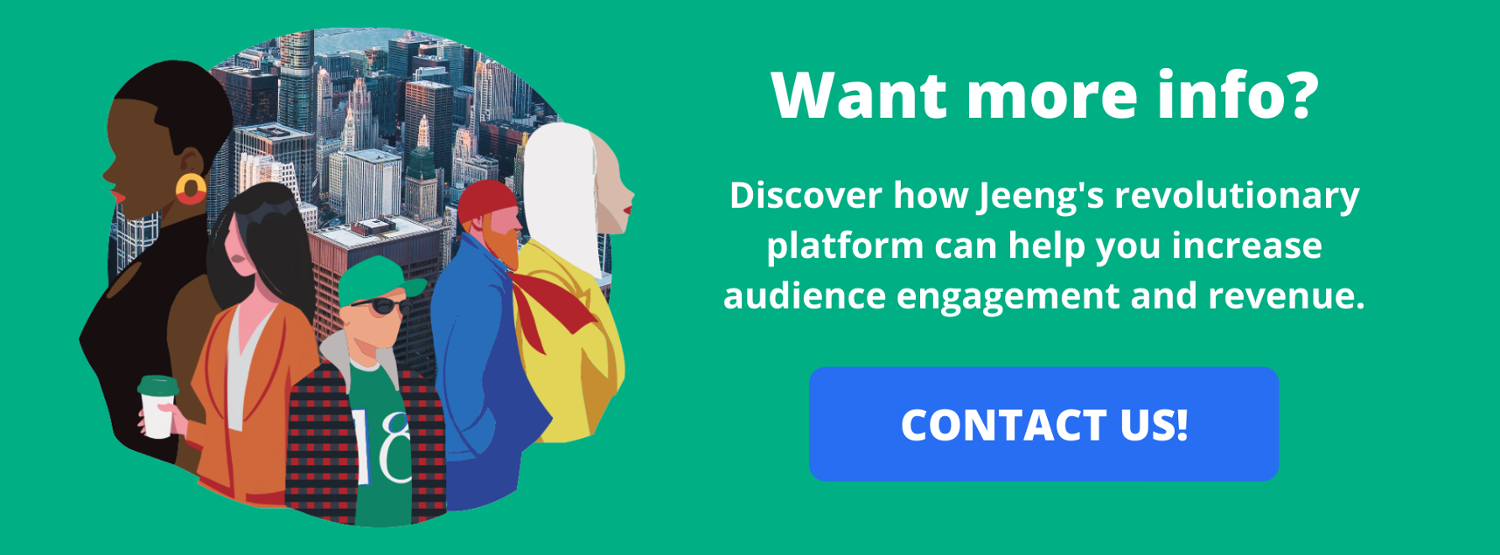Data is the key to building an effective content and engagement strategy, and truly understanding how audiences behave across platforms.
Especially as third-party cookies are set to leave the scene, publishers are being challenged to find new, long-lasting tools for audience data collection. They can gather first-party data, for example, through owned channels like email and push notifications, and then use that data to deliver more personalized, relevant experiences that drive results.
As Nielsen found, businesses with small, medium, and large marketing budgets all stressed the importance of first-party data over second- and third-party data. Yet many still reported that data quality and accuracy is still an obstacle to building their strategies.
So, to help publishers more effectively use engagement data to build audience growth strategies, we’re sharing key insights from leading publishers about how they gather and activate audience analytics across channels.
Here’s what they have to say:
1. Faisal Karmali, senior global director of business operations, CNN International, UK
“As a publisher, we have been using data-based and contextual targeting in tandem for some time. Especially since GDPR, contextual and semantic targeting has allowed for the continuation of audience targeting where cookies have reduced. We have built our own contextual engine on the back of that, which analyses the context of sentences across text, audio, video and galleries using neuro-linguistic AI.”
2. Erin Weaver, senior director of audience development, Group Nine Media
“Everyone is definitely finding the ‘newest normal’ and we lean really hard on our data. We look at what our audience is telling us and what we call intentional viewing and value metrics. So we look specifically at certain engagements […] like things that drive the most comments or heart reactions. Those signals are what we’re really chasing with our audiences.”
3. Jacques Edeling, programmatic operations lead, Starcom
“As publishers go through the same evolution as advertisers and face the same challenges, there will be an improvement in consent quality, and their first party data sets will also generally greatly expand. This offers an opportunity for both buyers and publishers to come together and provide a clear value exchange. This can be done with a simple PMP with publisher inventory and data overlaid, or far more complex buys through data bunkers matching data on both ends. The value to both parties is clear and one that we will see widely adopted.”
4. Josh Awtry, VP of content strategy, Gannett
“The biggest hurdle to implementing a good data culture in your organization is not data. We have so much data; we’re swimming in data. The problem is so many dashboards, not enough people parsing or prioritizing those dashboards, and not enough people empowered to make change from those dashboards. So we can send reports to upper management all day but we have to make it easier for them to understand what direction to take. And that’s part of why we created a team at Gannett because we had a gap there. It’s important to find those people who can look at data and then tell a story from that data.”
5. Daniel Hallac, CPO, Hearst Newspapers, US
“We may know that we have 10,000 users who are interested in, let’s say buying a car. But by developing look-alike capabilities, we obviously can find more people who are like them and infer that they also could be potential car buyers. And that’s a big part of helping our advertising business.”
6. Jeff Kupietzky, CEO, Jeeng
“How do we change the experience that a user has on receiving a notification, say a push or an email, where it’s going to feel relevant to them? You look for signals for that user in other channels at the same time. So we have the technology to say, ‘We saw what they were browsing on your site or app. This is the type of content that they’re actually interested in. So let’s not send them the summary wrap-up or even what’s trending right now.’ It’s really finding what speaks to each of them. That’s the type of personalization we talk about. And the only way to do that well is with lots of data, data science, and iteration.”
7. Esfand Pourmand, SVP of global subscriptions, News Corp
“In addition to leveraging the use of our audiences across business units, [data] allows us to think about the right products to build for those audiences and that’s really exciting for us. I think that’s the next step […] The KPIs that we’re moving are proving the model. Our efforts around customer engagement, subscription growth, activation rates, retention rates — we’re hitting our goals with this approach. And when you have your data centralized, you rely on that to feed all the other channels.”
8. Laura Argintar, senior director of audience acquisition & monetization, NBCUniversal Media
“I am a big fan of A/B testing. It’s our bread and butter, a cornerstone of what we do. There are two big tests I really like to run. I like to run call-to-action tests because those are really great for identifying very clearly two different sets of CTAs. And we’ve found that even just a small turn of phrase can really impact your clickthrough rate. When we add just the word ‘free’ we see the clickthrough rate shoot up. There’s also creative testing — testing different images. We find putting more talent or recognizable faces in our imagery leads to a higher clickthrough rate. It really depends on your KPIs.”
9. Adam Dylewski, director of programmatic, PBS Digital Studios
“We care, of course, how many views or subscriptions a channel gets in a week or a month. But what we really care about — especially because a lot of our content is quite evergreen — is where things are at six months or 12 months down the line. The general analytics framework we work with is a longer time scale so we don’t automatically kill projects that need time to grow and reach folks.”
10. Paul Bannister, chief strategy officer, CafeMedia
“In the future, the web will be split between anonymous users and authenticated users. In this paradigm, authenticated users and cohorts are beneficial on their own, but can help educate publishers about the value of their anonymous users. Conversely, publishers’ first-party data can help them not only learn about their anonymous users but have deeper insights on their authenticated traffic as well. It will be a symbiotic relationship between identity and publisher data, and publishers should balance their approach.”
Put your audience data to work
Make the most of your audience data with Jeeng, a comprehensive platform built to help publishers launch automated and personalized campaigns across channels — including email, web, push notifications, and newsreader apps. In fact, there’s no better way to prepare your business for upcoming changes in data and privacy than to partner with a system that already incorporates both.
Ready to get started? Reach out today to learn more.


